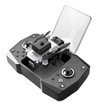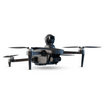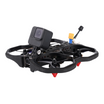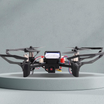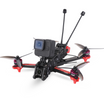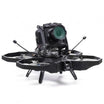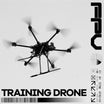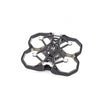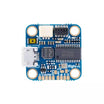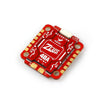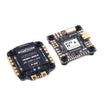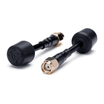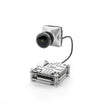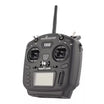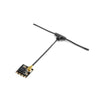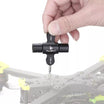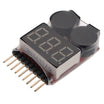State of the Art Indian Drone Laws in Vogue
By the end of this month our drone laws will look in a different light, our sources confirmed, the government all the while their hands full in forming a ‘drone promotion council’. Excitingly the drone weight bandwidths elevates from 300 to 500 kg (for heavy payload and drone taxis) opening planetary options to our enthusiasts. Moreover the Centre has relaxed security clearance before licence issuance making it more business friendly and taking the edge off the exhaustive 25 forms to 6.
Expectantly separate ‘Drone Corridors’ will be fenced for cargo drones. Besides benefitting the delivery corporates the new laws are set to benefit individuals by reducing the maximum penalty under drone rules to Rs one lakh only. With formatting the new regulation there is enhancement of the Digital Sky Platform too with an interactive hued airspace map display. The yellow zone has been shrunk from 45 kilometres to 12 kilometres from air terminal perimeters whereas all permissions that were earlier required for flying drones under green zones have been dissolved stretching upto 200 feet inside the area 8-12 km from airport (map will be displayed within 30 days of regulation publication).
30 key features of Drone Rules 2021
- Built on a premise of trust, self-certification and non-intrusive monitoring.
- Designed to usher in an era of super-normal growth while balancing safety and security considerations.
- Several approvals abolished: unique authorisation number, unique prototype identification number,certificate of manufacturing and airworthiness, certificate of conformance, certificate of maintenance, import clearance, acceptance of existing drones, operator permit, authorisation of R&D organisation, student remote pilot licence, remote pilot instructor authorisation, drone port authorisation etc.
- Number of forms reduced from 25 to 5.
- Types of fee reduced from 72 to 4.
- Quantum of fee reduced to nominal levels and delinked with size of drone. For instance, the fee for a remote pilot license fee has been reduced from INR 3000 (for large drone) to INR 100 for all categories of drones; and is valid for 10 years.
- Digital sky platform shall be developed as a user-friendly single-window system. There will be minimal human interface and most permissions will be self-generated.
- Interactive airspace map with green, yellow and red zones shall be displayed on the digital sky platform within 30 days of publication of these rules.
- No permission required for operating drones in green zones. Green zone means the airspace upto a vertical distance of 400 feet or 120 metre that has not been designated as a red zone or yellow zone in the airspace map; and the airspace upto a vertical distance of 200 feet or 60 metre above the area located between a lateral distance of 8 and 12 kilometre from the perimeter of an operational airport.
- Yellow zone reduced from 45 km to 12 km from the airport perimeter.
- No remote pilot licence required for micro drones (for non-commercial use) and nano drones.
- No requirement for security clearance before issuance of any registration or licence.
- No requirement of Type Certificate, unique identification numberand remote pilot licence by R&D entities operating drones in own or rented premises, located in a green zone.
- No restriction on foreign ownership in Indian drone companies.
- Import of drones to be regulated by DGFT.
- Requirement of import clearance from DGCA abolished.
- Coverage of drones under Drone Rules, 2021 increased from 300 kg to 500 kg. This will cover drone taxis also.
- DGCA shall prescribe drone training requirements, oversee drone schools and provide pilot licences online.
- Remote pilot licence to be issued by DGCA within 15 days of pilot receiving the remote pilot certificate from the authorised drone school through the digital sky platform.
- Testing of drones for issuance of Type Certificate to be carried out by Quality Council of India or authorised testing entities.
- Type Certificate required only when a drone is to be operated in India. Importing and manufacturing drones purely for exportsare exempt from type certification and unique identification number.
- Nano and model drones (made for research or recreation purposes) are exempt from type certification.
- Manufacturers and importers may generate their drones’ unique identification number on the digital sky platform through the self-certification route.
- Easier process specified for transfer and deregistration of drones through the digital sky platform.
- Drones present in India on or before 30 Nov 2021 will be issued a unique identification number through the digital sky platform provided, they have a DAN, a GST-paid invoice and are part of the list of DGCA-approved drones.
- Standard operating procedures (SOP) and training procedure manuals (TPM) will be prescribed by DGCA on the digital sky platform for self-monitoring by users. No approvals required unless there is a significant departure from the prescribed procedures.
- Maximum penalty for violations reduced to INR 1 lakh.
- Safety and security features like ‘No permission – no takeoff’ (NPNT), real-time tracking beacon, geo-fencing etc. to be notified in future. A six-month lead time will be provided to the industry for compliance.
- Drone corridors will be developed for cargo deliveries.
- Drone promotion council to be set up by Government with participation from academia, startups and other stakeholders to facilitate a growth-oriented regulatory regime.
With this quick revision in drone laws a minimum of six months will be provided for compliance. For those in research and development in this field no longer require type certificates, unique identification number and remote pilot licence albeit drone imports continues to be regulated by Director General of Foreign Trade (DGFT). The pilots as well as owners have already been exempted from purchasing unique prototype identification number, certificate of conformance, certificate of maintenance, operator permit, authorisation of R&D organisation, drone port authorisation etc.
The new rules propose that digital sky will be a ‘business friendly single window online’ system with minimal human intervention and automated self generating permits.
The rehashing of flexible laws are probably the outcome of the shocking Jammu Airforce station incident (explosives were dropped via drones hovering merely a few hundred metres above Satwari) and the Government recognised the need of freedom to promote “counter drone technology” and that excess control measures on indigenous, domestic and recreational drones will have negligible effect upon enemy drones. Besides, the agile laws are proven to aid research in drone technology for the country to stand at par globally.
Replacing the Unmanned Aircraft Systems Rules 2021, the new Drone Rules are currently under final incorporation to be published for the citizens without further delay. Note that the revision is only a week old from the central permission, of one year for drone use, to 10 organisations including Mahindra and SAIL.

